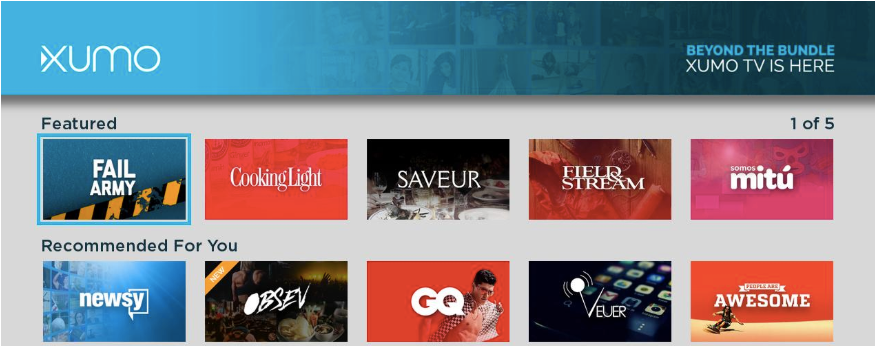 Everything, everywhere all the time.
Everything, everywhere all the time.
That seems to be the experience of streaming or OTT TV, as consumers cut the cord with cable and opt for a wide variety of options. Too wide, if you ask Steve Smith, a media industry thought leader writing in Folio:.
“It’s undeniable that the future of television is streaming,” Smith writes. “But that future has yet to fully take form. We don’t know what cross-screen behaviors we will craft for ourselves, just as we don’t know how much we want to lean in or lean back. History suggests that more-is-not-more when it comes to media—new and old—and people tend to burrow into a few orderly grooves of content consumption.”
Anyone who’s wasted their time browsing Netflix for “something to watch” understands the challenge here. We’ve traded in the typical cable viewer’s problem of “too many channels and nothing to watch” to the OTT dilemma of “too many broadcasters with too many channels and still nothing to watch.”
Magazine media have fallen into the OTT trap, trying to become their own broadcast destinations.
“Many in the industry rightly liken it to Charlie Brown’s ever-hopeful but futile attempts at kicking Lucy’s football,” Smith writes. “At first, the print brands launched their own short-form programming on-site, which no one clicked. And so they turned to social distribution: Facebook, YouTube, Instagram, Snapchat and countless video aggregators who themselves fantasized about being a ‘new TV.’ But they were also smart enough to know a sucker when they saw one.”
The video content mic dropped hard back in 2017, when brands began to realize they were wasting their money on video ad budgets.
Hyper-distribution – pushing out brand content to every channel under the sun – is also neither feasible nor sustainable. Media brands have understandably been throwing spaghetti at the wall to see what sticks when it comes to viable distribution strategies.
I see publishers embracing unique models that work for them and their audiences. I see ad-free high-end magazines; I see niche titles leading the growth trend; I see magazine brands waking up to paid content strategies and leveraging their first-party user data. Ultimately, we are witnessing the industry move away from panic-stricken “innovation” to inspired marketing tactics – and it starts when brands look to their audience to inform their strategy, using data to inform their insights.
As Smith reminds us, those audiences can be found via OTT, but he cautions that publishers should not seek to become their own broadcast center, or try to be everywhere. Rather, he looks to certain streaming services that seem to resonate really well for magazine media.
“If you want a glimpse at the magazine/TV efforts that have accumulated over the years, check out the free, ad-supported OTT app Xumo,” Smith continues. “It contains a deep list of familiar brands that include Bloomberg, Time, Wired, Golf Digest, Field & Stream, Cycle World, Cooking Light, Saveur, Architectural Digest, Southern Living, Popular Science and Vogue (to name more than a few).”

Like anything online, being “found” means strategically placing yourself where your audience is.
“Netflix has (finally) discovered that its users really don’t want to spend half an evening browsing too many options before choosing (or settling on) one,” Smith continues. “Magazines need to be thinking less about their own channels and more about partnerships with the channels that are getting traction and are mastering the rhythms of viewing and browsing behaviors.
“Rather than trying to crack the code of every new video distribution platform, the solution for magazines may not be through traditional models. For decades, I have watched magazine brands chase their TV envy with futility, and there is almost always some emerging platform ready to exploit it. The industry needs to be smarter than Charlie Brown this time. Rather than racing to kick the same old ball, try switching sports,” Smith concludes.
That’s not to say that media brands need to return to the age of hyper-distribution – that failed and for good reason. Rather, Smith advocates taking a careful look at what OTTs are actually working for magazine media, and explore those options. It’s an interesting idea.
I keep coming back to the fact that digital – in all its forms – is in its infancy. It’s a hot mess out there in OTT land, but some order is starting to form out of the chaos. Instead of trying to make inroads with a scattershot approach, broadcasting across any possible channel, magazine media can leverage the inroads already made by other brands with like audiences.
That’s smart TV.
